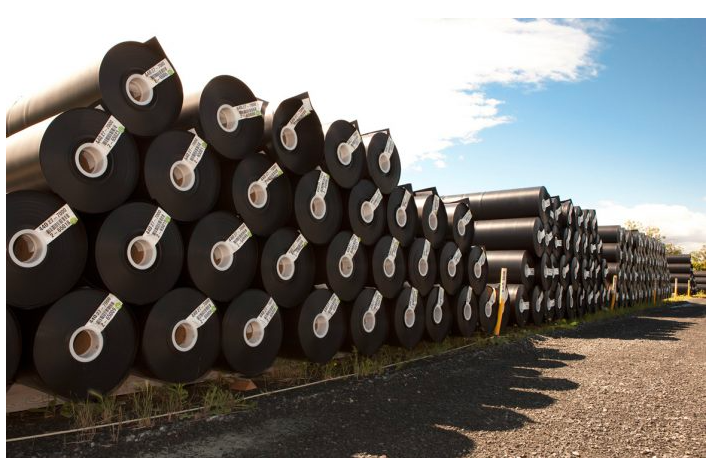- Understanding the Role of Geomembrane Liners in Waste Management
- Innovations in Geomembrane Liners for Water Management
- Geomembrane Liners: A Comprehensive Guide
- The Future of Geomembrane Liners in Civil Engineering
- Geomembrane Liners: Enhancing Landfill Stability
Manager:
WhatsApp:+86 177 0135 2670
Tel:+86 177 0135 2670
Email:marketing@okorder.com
Address:3rd Floor, No.2 Building, No.1 Sanlihe Road
The Versatile World of LDPE Geomembrane: A Journey Through Its Applications and Benefits
When I first stumbled upon LDPE geomembrane, I was intrigued by its simplicity yet profound impact on various industries. It's not just a piece of plastic; it's a guardian of our environment, a protector of our water bodies, and a silent soldier in the battle against soil erosion. Let's delve into the world of LDPE geomembrane, exploring its applications, benefits, and the subtle nuances that make it an indispensable material in today's world.

The Essence of LDPE Geomembrane
LDPE geomembrane, crafted from low-density polyethylene, is a soft, flexible plastic that's relatively inexpensive and a breeze to work with. It's the go-to material when flexibility is the name of the game, such as in pond liners, landfill liners, and reservoir liners. The thickness of this geomembrane can vary from a slender 0.5mm to a robust 3mm, tailored to suit the specific needs of each application.
Installation: A Seamless Symphony
The installation process of LDPE geomembranes is akin to a well-rehearsed orchestra. The edges of the sheets are welded together, creating a seamless barrier that's as resistant to leaks and spills as it is to the challenges of the environment. This bonding process ensures that the geomembrane not only performs its duty but does so with an elegance that's hard to match.
Types of LDPE Geomembrane: A Tale of Two Surfaces
There's more to LDPE geomembranes than meets the eye. They come in two main types: smooth and textured. Smooth LDPE geomembranes are the budget-friendly option, easy to install, but they're not as puncture-resistant as their textured counterparts. Textured LDPE geomembranes, with their raised pattern, increase friction and are more resistant to slippage and punctures. They also have a leg up in the fight against UV degradation.
Specialty LDPE Geomembrane: The Unsung Heroes
Beyond the common types, specialty LDPE geomembranes step in when the going gets tough. High-density LDPE geomembranes boast a higher resistance to punctures and tears, while UV-stabilized LDPE geomembranes are the sunscreen-wearing champs of the geomembrane world. Chemical-resistant LDPE geomembranes are the shield for industrial applications, designed to withstand harsh chemical encounters.
Product Specifications: The Fine Print of LDPE Geomembrane
The specifications of LDPE geomembrane are as varied as the applications they serve. Thickness, tensile strength, elongation at break, water permeability, chemical resistance, and UV resistance are all part of the LDPE geomembrane's resume. These specs ensure that the geomembrane is up to the task, whether it's a pond liner or a landfill cover.
Applications: The Many Faces of LDPE Geomembrane
LDPE geomembrane is a Swiss Army knife of materials. It's used in pond liners for its water and chemical resistance, in landfill liners for its puncture resistance, and in wastewater treatment ponds for its ability to contain contaminants. Reservoir liners, dams, levees, aquatic habitats, soil erosion control projects, roofing membranes, and chemical storage tanks all benefit from the protective qualities of LDPE geomembrane.
Performance: The LDPE Geomembrane's Report Card
When it comes to performance, LDPE geomembrane is the straight-A student. It's resistant to water and chemicals, flexible enough to fit any surface, durable to withstand the test of time, and UV resistant to brave the sun's rays. Its cost-effectiveness is the cherry on top, making it a favorite for projects with budget constraints.
Environmental Impact: The Green Side of LDPE Geomembrane
While LDPE geomembrane is a hero in many ways, it's not without its environmental impact. The production process can release pollutants, and improper disposal can lead to harmful chemicals leaching into the environment. However, when used correctly, LDPE geomembrane can prevent pollution by containing contaminants and protecting our ecosystems.
Cost: The Price of Protection
The cost of LDPE geomembrane is as diverse as its applications. Factors like thickness, size, and manufacturer all play a role in determining the price. But with the right research and a bit of savvy shopping, you can find an LDPE geomembrane that fits your budget without compromising on quality.
Advantages and Disadvantages: The Yin and Yang of LDPE Geomembrane
Every material has its pros and cons, and LDPE geomembrane is no exception. Its water and chemical resistance, flexibility, durability, UV resistance, and cost-effectiveness are all strong points. However, it's susceptible to stress cracking, has lower tensile strength compared to other geomembranes, and can degrade under prolonged UV exposure.
Installation and Maintenance: The Care and Feeding of LDPE Geomembrane
Proper installation is crucial for the effectiveness of LDPE geomembrane. It's like planting a tree; if it's not done right, it won't grow to its full potential. Regular maintenance is also key to ensuring the longevity of the geomembrane. It's not just about installing it and forgetting it; it's about nurturing it to perform at its best.
Conclusion: The Final Chapter of LDPE Geomembrane
As we wrap up our journey through the world of LDPE geomembrane, it's clear that this material is more than just a plastic sheet. It's a multifaceted solution to a myriad of environmental challenges. While it's not perfect, its advantages often outweigh its disadvantages, making it a valuable asset in our quest for a cleaner, safer world. So, the next time you see an LDPE geomembrane, remember the story behind it and the role it plays in protecting our planet.
- Previous:The Unfolding Story of HDPE Geomembranes: A Protective Embrace for Our Environment
- Next:The Marvel of Geomembranes: Lona and Beyond






